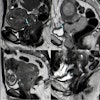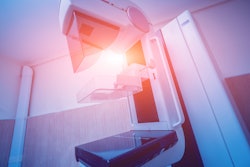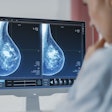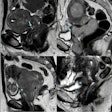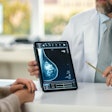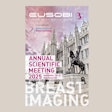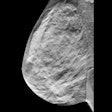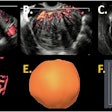Including nonimplant-displaced views on digital breast tomosynthesis (DBT) can lead to overall increased average glandular dosage, a study presented at the American Roentgen Ray Society (ARRS) annual meeting found.
In his presentation, Dr. Derek Nguyen from Duke University in Durham, North Carolina, U.S., discussed his team’s findings, which also showed that including these views along with standard DBT views is not significantly tied to increased cancer detection in women with augmented breasts. However, the results suggest that breast radiologists can switch to 2D imaging to reduce radiation exposure.
“This provides evidence to now support the use of full-field digital mammography for the nonimplant-displaced views instead of tomosynthesis,” Nguyen told AuntMinnie.com.
Breast implants present a unique challenge for radiologists, impacting the sensitivity of conventional breast imaging. Implant-displaced views have been incorporated into imaging of these breasts to better detect abnormalities in augmented breasts. With these four additional views added to the screening protocol comes more exposure to radiation, which is further exacerbated by DBT exams.
“While the benefits of increased cancer detection on the implant displaced views performed with [DBT] do outweigh the risks from increased radiation, little data exists regarding the true benefits of performing nonimplant-displaced views with [DBT],” Nguyen said.
The Nguyen team determined the appropriate screening protocol for imaging augmented breasts with the goal of maximizing cancer detection and minimizing radiation exposure.
The retrospective study included 195 women with an average age of 55 years with 223 abnormal findings. The women underwent DBT examinations that were assigned BI-RADS assessments of 0, 3, 4, or 5 between 2014 and 2021. The standard implant screening protocol included DBT with synthesized 2D implant-displaced and nonimplant-displaced craniocaudal and mediolateral oblique views.
Three fellowship-trained breast radiologists who were blinded to pathology outcomes independently reviewed all exams to determine whether the initial identified abnormality could be visualized on two different protocols: the aforementioned standard protocol and an alternative protocol, the latter consisting of 2D and DBT implant displaced and synthesized 2D nonimplant-displaced only.
The team observed moderate agreement between the readers (κ = 0.582). It also reported that subsequent biopsy was performed for 86 abnormalities. Of these, 58 were benign, eight were high-risk, and 19 were malignant. Additionally, the false-positive (69%) and high-risk lesion (9%) rates were similar between the two protocols.
While including DBT nonimplant-displaced views did not lead to significantly more cancers being detected, it did increase the total examination average glandular dosage in the women.
 Researchers from Duke University compared standard and alternative imaging protocols for women with augmented breasts. The standard protocol includes non-implant displaced views via DBT, which the team found increases average glandular dosage, but does not significantly increase malignancy rates over the alternative 2D protocol.ARRS
Researchers from Duke University compared standard and alternative imaging protocols for women with augmented breasts. The standard protocol includes non-implant displaced views via DBT, which the team found increases average glandular dosage, but does not significantly increase malignancy rates over the alternative 2D protocol.ARRS
Additionally, the trend of average glandular dosage between the two protocols remained true when stratified by breast thickness.
The one additional malignancy found with the inclusion of the DBT nonimplant-displaced views was a 0.8-cm architectural distortion. This was observed only on the DBT nonimplant-displaced mediolateral oblique view in women with heterogeneously dense tissue and saline, retro-pectoral implants.
Nguyen said that these results indicate that breast imagers can switch from nonimplant-displaced views from DBT with synthesized 2D mammography to 2D imaging only in screening protocols for women with implant augmentation. This will reduce radiation exposure and patient discomfort without affecting cancer detection, he added.
“This aligns with ACR [American College of Radiology] recommendations, but now provides evidence to support the recommendation,” he told AuntMinnie.com.
The study was also published on 4 May in the Journal of Breast Imaging. The full results can be found here.




